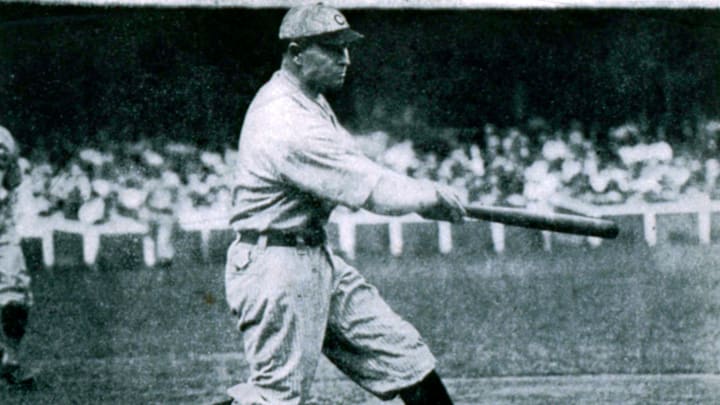Most new baseball owners make two promises: they will (1) hire "the right people" and (2) let those people do their jobs. Most owners fail to honor at least one of these promises. Jim Hart, who took over as Chicago Colts (now, the Chicago Cubs) team president in 1892, managed to fulfill both, although it took him a while.
After Al Spalding finished burning the villages and stealing the crops of the ill-fated Players' League, he decided to step away from the Colts. Much to Cap Anson's consternation, in 1892 Spalding gave the team president job to Jim Hart, who had successfully managed a team of all-stars Spalding had assembled for a world tour in 1888-89.
Hart and Anson quickly became enemies, their moods not improved by the team's slogging mediocrity. From 1892-1897, the Chicagoans were seventh in runs scored (in a 12-team league), ninth in runs allowed and ninth in Total Zone rating. (I don't have their rank in defensive efficiency, a more intuitive fielding stat, but they finished below the league average in most of these seasons.)
The roster pattern during this time would be familiar to fans of later generations of bad Cubs teams: two or three star-ish players surrounded by a cast of replacement level nonentities. Clark Griffith, Bill Dahlen, even (for a year or two) aging Cap Anson were quality players, but there were way too many Malachi Kittridges, Jiggs Parrots, and George Deckers on the roster to allow for any kind of consistent success.
And Anson himself was becoming a liability. He continued to manage the team (which might not have been a problem), and to put himself in the lineup even as his skills eroded (which was an increasingly serious problem). Hart almost certainly would like to have rid himself of Anson but Cap had a contract that ran through 1898. He was also perhaps the biggest celebrity athlete in the United States during this time, while Jim Hart was ... not.
It turned out, though, that Anson's contract only ran through the 1897 season and Hart jumped at the opportunity to toss Anson under the trolley. Did a nefarious goat eat the last year of the deal? We may never know, but while Anson was outraged at the turn of events he did not sue, suggesting that the contract terms were clear enough upon close examination to justify Hart's action. A more intriguing possibility is that the canny Spalding knew exactly what he was doing, giving himself an out that he eventually didn't need to use since he had dumped the whole Anson problem on Hart.
In any event, with the advent of the 1898 season Hart now had his chance to hire the right manager and get out of the way, and that is exactly what he did. Hart brought in Frank Selee, who the Boston Beaneaters had recently fired after a very successful run, to manage the Chicago squad, now known as the Orphans because of Anson's departure.
Selee proved to be a brilliant choice. He mixed an emollient personality with a shrewd and creative ability to identify and develop talent. Think, maybe, an early edition Joe Maddon (not the Ragin' Joe currently on book tour). Selee focused on putting together a roster of young players who could grow into the game.
Jim Hart and Frank Selee established a Chicago dynasty for the ages
Frank Chance, already there when Selee arrived, could hit but couldn't throw, a suboptimal combination for a catcher, so Selee moved him to first, which allowed Actual Catcher(tm) Johnny Kling to play behind the dish. After some apparent hesitation, Selee decided Joe Tinker would work out alright at short. In 1902 he would trade for Johnny Evers. The future Chicago Cubs dynastic infield was nearly complete. After the 1903 Selee traded for Mordecai Brown, who would become the dynasty's ace.
Given Selee's emphasis on assembling a team that got along well together, it is a bit surprising that he inadvertently helped foster one of the most toxic off-field feuds in baseball history, that between Tinker and Evers. It is probably to Selee's credit that he kept the players on the same page while they were on the field; a more combative manager might have had less patience with this difficult but productive partnership during its formative years.
Neither Hart nor Selee would be able to enjoy the World Series triumphs they did so much to create. Cardiac arrest struck down Hart in 1902. Selee was already suffering from a debilitating illness that he would eventually learn was tuberculosis. While the Cubs (his Cubs, in many respects) were winning two World Series in three years he was managing a minor league team in Colorado, having moved their in a bid to help his ailing lungs.
Selee passed away in 1909, as did, in some sense, the second great Chicago baseball dynasty. But we're getting ahead of ourselves. We'll look at that dynasty, and it's rambunctious new owner, in more detail next.
